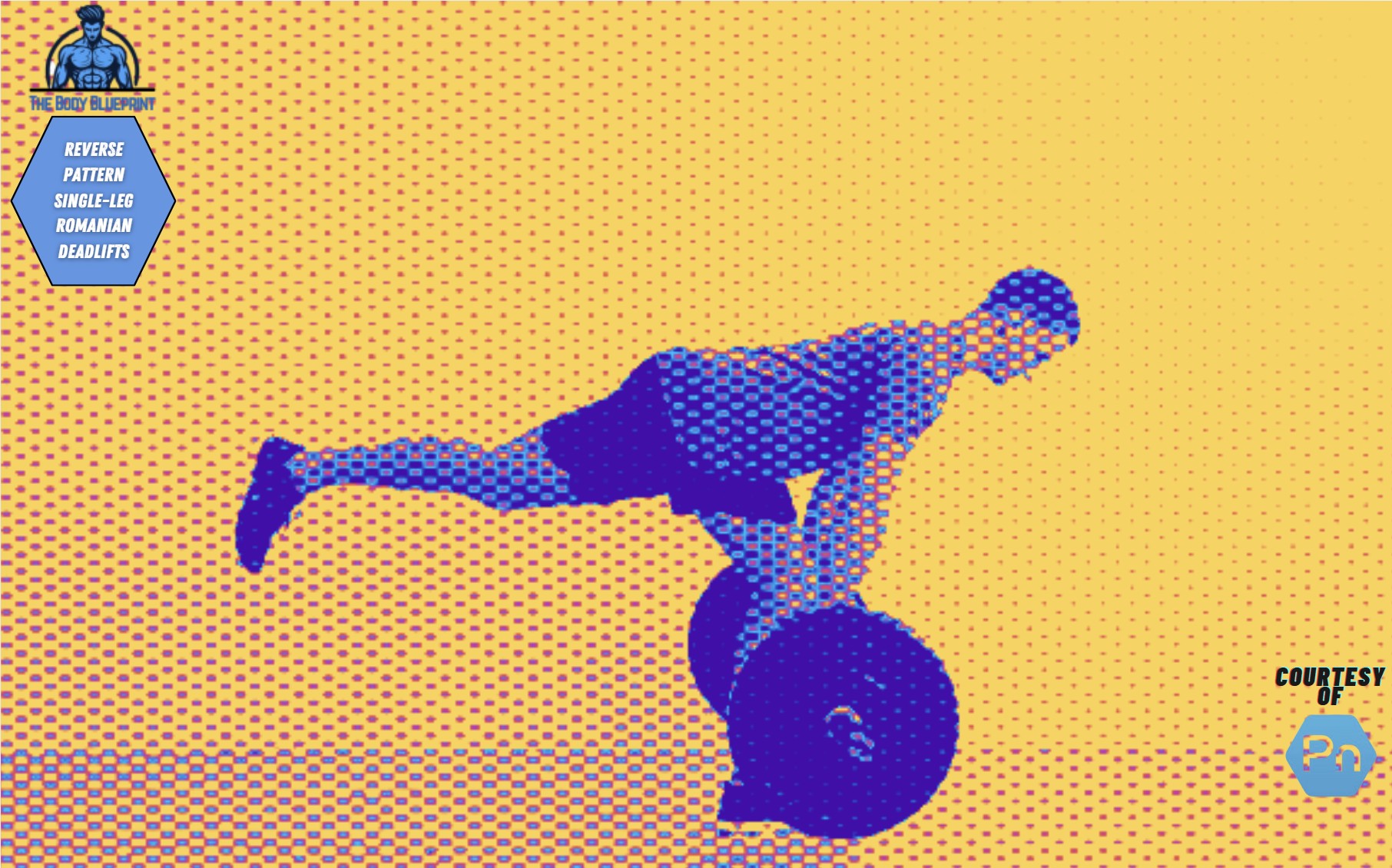You’re here to unlock the next level of lower-body dominance, right? Let me introduce you to the reverse pattern single-leg Romanian deadlift (S-L RDL). It’s not just a tongue-twister—it’s a game-changer. This isn’t your average gym move; it’s precision meets power, balance meets control, and strength meets athleticism.
Let’s dive into why this move deserves a VIP spot in your training program.
What Are Reverse Pattern Single-Leg Romanian Deadlifts?
The reverse pattern S-L RDL is a variation of the classic single-leg Romanian deadlift that swaps the forward-reaching motion for a reverse-reaching one. Instead of extending the non-working leg backward, you draw it forward, creating a counterbalance that improves stability and muscular engagement.
This shift puts a unique focus on your posterior chain (think hamstrings and glutes) while also activating your core for balance. Bonus? It’s a killer way to improve single-leg coordination and hip mobility.
Why Should You Add This Exercise to Your Routine?
Let’s get real—if you’re ignoring single-leg training, you’re leaving gains on the table. Here’s what reverse pattern S-L RDLs bring to the party:
Benefits of Reverse Pattern S-L RDLs
- Build Bulletproof Balance: Tired of wobbling on one leg? This move fine-tunes your stability like a laser.
- Strengthen the Posterior Chain: Hamstrings and glutes? They’ll thank you with new levels of power.
- Increase Athleticism: Run faster, jump higher, lift heavier—this move boosts functional strength.
- Enhance Core Engagement: Your core works overtime to stabilize, carving out those deep stabilizer muscles.
- Prevent Injuries: Strengthening imbalances and improving mobility reduces your injury risk.
Performing Reverse Pattern Single-Leg Romanian Deadlifts
Step-by-Step Instructions:
- Start with Setup: Stand tall with feet hip-width apart. Hold a dumbbell or kettlebell in one hand (same side as the working leg).
- Anchor Your Balance: Shift your weight onto your working leg, keeping a slight bend in the knee.
- Engage Your Core: Brace your core like you’re about to take a punch.
- Reach Forward: Begin the reverse motion by hinging at your hip and extending the non-working leg forward.
- Lower the Weight: Bring the weight toward the ground in a controlled motion. Feel the stretch in your hamstrings.
- Return to Start: Drive through your heel to return to the standing position.
Pro Tip: Keep your movements slow and controlled—this isn’t a race.
Common Mistakes to Avoid
- Rounding Your Back: Keep that spine neutral. A rounded back puts your lower back at risk.
- Losing Balance: If you’re wobbling too much, reduce the range of motion until you nail stability.
- Neglecting the Core: Without core engagement, you’re not getting the full benefits.
Muscle Activation in Reverse Pattern Single-Leg Romanian Deadlifts
Want to know which muscles are doing the heavy lifting? Here’s a breakdown:
| Muscle Group | Primary or Secondary? | Role |
|---|---|---|
| Glutes | Primary | Hip extension and stabilization. |
| Hamstrings | Primary | Eccentric control and power. |
| Core | Secondary | Stabilization and balance. |
| Calves | Secondary | Ankle stability. |
Variations to Spice It Up
If you’re ready to level up or need to scale back, here are a few tweaks:
Progressions
- Weighted Reverse Pattern S-L RDLs: Add dumbbells or kettlebells to increase resistance.
- Barbell Variation: Use a barbell for added intensity.
- Tempo Training: Slow down the descent for maximum time under tension.
Regressions
- Assisted Reverse Pattern S-L RDLs: Use a wall or a TRX strap for support.
- Bodyweight Only: Skip the weights to focus on balance and form.
Programming Reverse Pattern S-L RDLs
Ready to incorporate this into your workouts? Here’s a sample program:
| Goal | Sets/Reps | Rest | Intensity |
|---|---|---|---|
| Strength | 3-4 sets of 8-10 reps | 60-90 seconds | Heavy weights |
| Hypertrophy | 3-4 sets of 10-12 reps | 60 seconds | Moderate weights |
| Balance and Stability | 3 sets of 12-15 reps | 30-45 seconds | Light weights/bodyweight |
Pro Tip: Pair these with squats or deadlifts for the ultimate lower-body day.
How Do Reverse Pattern S-L RDLs Compare to Standard S-L RDLs?
| Feature | Standard S-L RDL | Reverse Pattern S-L RDL |
|---|---|---|
| Leg Motion | Backward reach | Forward reach |
| Balance Difficulty | Moderate | High |
| Posterior Chain Activation | Strong | Stronger |
| Hip Mobility | Moderate | Improved |
FAQs About Reverse Pattern Single-Leg Romanian Deadlifts
Q: Can beginners do this exercise?
A: Absolutely. Start with bodyweight only and use a wall for support until you master the movement.
Q: How often should I train this?
A: Two to three times a week is ideal for most lifters.
Q: What weight should I start with?
A: Begin with light dumbbells or a kettlebell—focus on form first.
Final Thoughts: Why You Need Reverse Pattern S-L RDLs
If you’re serious about building balance, strength, and athleticism, the reverse pattern single-leg Romanian deadlift is a must-have. This isn’t just another leg day move; it’s the kind of exercise that translates to real-world power. Whether you’re crushing it on the field, in the gym, or just tackling life, this one’s got your back—and your hamstrings.
Now, grab a dumbbell, plant your foot, and start reversing your way to gains. You’ve got this!

